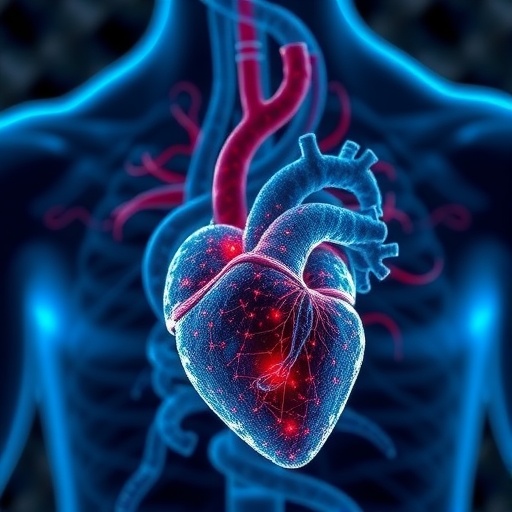Sensor data from wearable devices can complement virus testing and conventional screening to signal new infections
![]()
Credit: Scripps Research
LA JOLLA, CA–Examining data from the first six weeks of their landmark DETECT study, a team of scientists from the Scripps Research Translational Institute sees encouraging signs that wearable fitness devices can improve public health efforts to control COVID-19.
The DETECT study, launched on March 25, uses a mobile app to collect smartwatch and activity tracker data from consenting participants, and also gathers their self-reported symptoms and diagnostic test results. Any adult living in the United States is eligible to participate in the study by downloading the research app, MyDataHelps.
In a study that appears today in Nature Medicine, the Scripps Research team reports that wearable devices like Fitbit are capable of identifying cases of COVID-19 by evaluating changes in heart rate, sleep and activity levels, along with self-reported symptom data–and can identify cases with greater success than looking at symptoms alone.
“What’s exciting here is that we now have a validated digital signal for COVID-19. The next step is to use this to prevent emerging outbreaks from spreading,” says Eric Topol, MD, director and founder of the Scripps Research Translational Institute and executive vice president of Scripps Research. “Roughly 100 million Americans already have a wearable tracker or smartwatch and can help us; all we need is a tiny fraction of them–just 1 percent or 2 percent–to use the app.”
With data from the app, researchers can see when participants fall out of their normal range for sleep, activity level or resting heart rate; deviations from individual norms are a sign of viral illness or infection.
But how do they know if the illness causing those changes is COVID-19? To answer that question, the team reviewed data from those who reported developing symptoms and were tested for the novel coronavirus. Knowing the test results enabled them to pinpoint specific changes indicative of COVID-19 versus other illnesses.
“One of the greatest challenges in stopping COVID-19 from spreading is the ability to quickly identify, trace and isolate infected individuals,” says Giorgio Quer, PhD, director of artificial intelligence at Scripps Research Translational Institute and first author of the study. “Early identification of those who are pre-symptomatic or even asymptomatic would be especially valuable, as people may potentially be even more infectious during this period. That’s the ultimate goal.”
For the study, the team used health data from fitness wearables and other devices to identify–with roughly 80% prediction accuracy–whether a person who reported symptoms was likely to have COVID-19. This is a significant improvement from other models that only evaluated self-reported symptoms.
As of June 7, 30,529 individuals had enrolled in the study, with representation from every U.S. state. Of these, 3,811 reported symptoms, 54 tested positive for the coronavirus and 279 tested negative. More sleep and less activity than an individual’s normal levels were significant factors in predicting coronavirus infection.
The predictive model under development in DETECT might someday help public health officials spot coronavirus hotspots early. It also may encourage people who are potentially infected to immediately seek diagnostic testing and, if necessary, quarantine themselves to avoid spreading the virus.
“We know that common screening practices for the coronavirus can easily miss pre-symptomatic or asymptomatic cases,” says Jennifer Radin, PhD, an epidemiologist at the Scripps Research Translational Institute who is leading the study. “And infrequent viral tests, with often-delayed results, don’t offer the real-time insights we need to control the spread of the virus.”
The DETECT team is now actively recruiting more participants for this important research. The goal to enroll more than 100,000 people, which will help the scientists improve their predictions of who will get sick, including those who are asymptomatic. In addition, Radin and her colleagues plan to incorporate data from frontline essential workers who are at an especially high risk of infection.
###
Learn more about DETECT at detectstudy.org.
The study, “Wearable Sensor Data and Self-reported Symptoms for COVID-19 Detection,” is authored by Giorgio Quer, Jennifer M. Radin, Matteo Gadaleta, Katie Baca-Motes, Lauren Ariniello, Edward Ramos, Vik Kheterpal, Eric J. Topol and Steven R Steinhubl.
Funding for the research was provided by the National Center for Advancing Translational Sciences at the National Institutes of Health [UL1TR00255].
Media Contact
Kelly Quigley
[email protected]
Original Source
https:/
Related Journal Article
http://dx.




